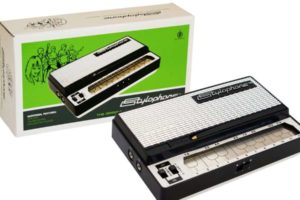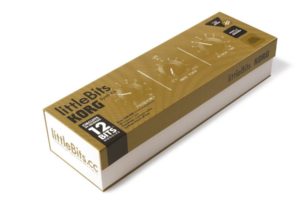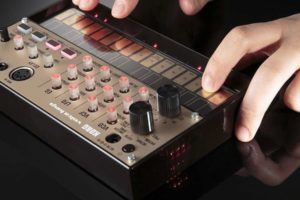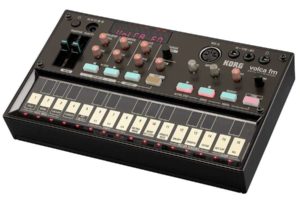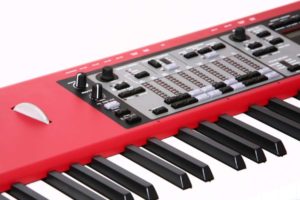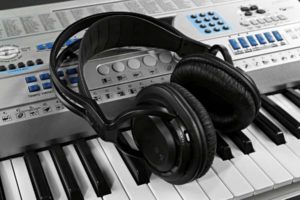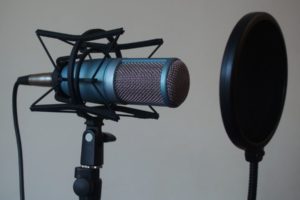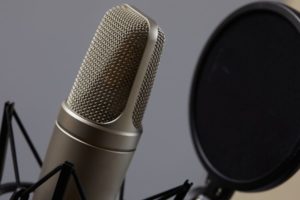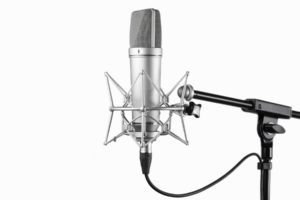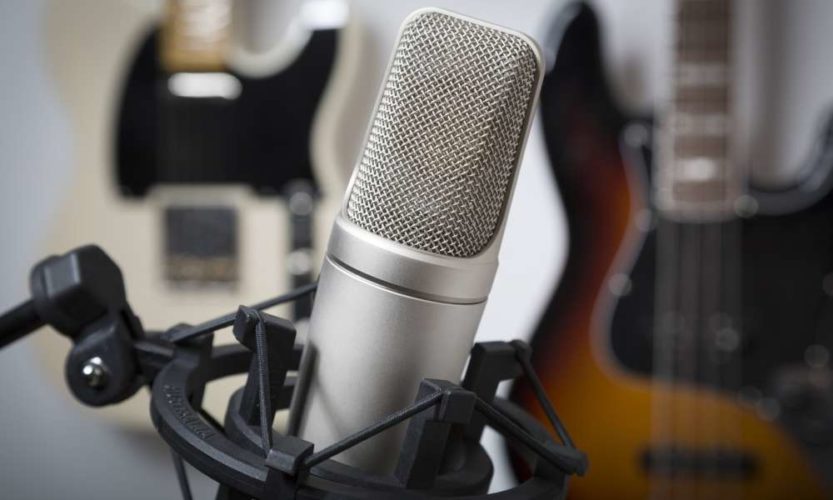 Posting a song cover, a video tutorial, a music video, a podcast or a short film these days has been made easier with just a click of few buttons because of the advancement in technology.
Posting a song cover, a video tutorial, a music video, a podcast or a short film these days has been made easier with just a click of few buttons because of the advancement in technology.
In this day and age where a high number of view, like and share of posted entries seems to be a driving force in introducing and reintroducing recording artists in the international arena, having a good quality recording has never been more important and necessary.
With the progress and evolution of devices also came the evolution of microphones. From its humble beginnings in the form of acoustic megaphones, the microphone has come a long way in its progress. Now there are more advanced and more complex microphones that could perform better in many aspects. One of these advancements is called the condenser microphone.
Condenser Microphone
The condenser microphone is a type of microphone that uses two plates in making a sound. The condenser microphone is also known as capacitor microphone or electrostatic microphone because it uses the Capacitance Principle in its process and relies on a capacitor to function.
The condenser microphone was first invented 1916 and made known in Bells Lab by inventor E. C. Wente and from then on, it has gone through several changes but the basic principle behind its workings has remained the same.
A condenser microphone has two plates to work on – one is a fixed yet electrically charged plate and another is a conductive diaphragm. The diaphragm is usually mounted parallel to the fixed plate.
The process of creating and amplifying sound starts when the conductive diaphragm has been exposed to or subjected to air pressure from a sound source like voice and stringed instruments being played.
When this happens, the conductive diaphragm starts to vibrate and the distance or space between the two plates – the vibrating diaphragm and the charged plate – effectively converts the acoustic signal into an electric current. As a result, the electric current converted is being amplified by the condenser microphone for broadcasting or recording.
Types of Condenser Microphone
The condenser microphone is divided into two (2) types. One is differentiated from the other by the size of the diaphragm. The two (2) types of condenser microphone are small diaphragm condenser microphone and large diaphragm condenser microphone.
The small diaphragms condenser microphone has a smaller membrane compared to the other type. This smaller membrane makes it possible for this type of condenser microphone to have a faster response to the sound source. Also, it makes the small condenser microphone good in picking up and amplifying high and fast frequencies.
The large diaphragm condenser microphone, on the other hand, has a bigger membrane. A bigger membrane would mean slower response to the sound source when compared to the other type. The slower sound source is good in picking up and amplifying low audio frequencies.
Uses of the Condenser Microphone
Because of its structure and workings, the condenser microphone is considered as the most detailed as well as the most accurate type of microphone. Unlike the other types, like the dynamic microphone, the condenser microphone has a better and wider transient response and frequency response. This capacity would make the condenser microphone as the best type of microphone for audio recording
. In fact, any respectable record studio and professional recording artist would definitely have a condenser microphone or two at arm’s reach. The preference of the condenser microphone over the others may be hinged on the fact that the device can easily pick up a wide range of loud noises and voice depths without causing any distortion with the sound – as a result, giving a clear and accurate recording.
When it comes to voice recording, the large diaphragm condenser microphone is the better option. As for the instrumental recording of amps and stringed instruments, like electric guitars or acoustic guitars, the better choice is using a small diaphragm condenser microphone.
Choosing the right and best condenser mic to do the job would make a big difference in the resulting output of the recording so it is important that the users or the record artists know which type of microphone works best for a particular purpose.
Downsides of Using a Condenser Microphone
Although the condenser microphone is the go-to microphone for any recording – voice or otherwise – using such type of microphone also has its downsides. One would be the cost of purchasing a condenser microphone. A condenser microphone is usually more expensive than the dynamic microphone and other types.
The condenser microphone should also be handled with caution and care because of its fragility and delicateness; it has the tendency to rupture easily when handled roughly or when accidentally dropped from its stand or mount.
Since the condenser microphone has a fragile nature, this type of microphone does not make a good onstage and outdoor tool. Also, the condenser microphone would require the use of a separate power source in the form of an electric outlet or a phantom power supply. Complying with this requirement could possibly mean more expense and inconvenience.
What Makes the Best Condenser Mic
Condenser microphones these days come in different shapes, sizes and prices and one would be hard pressed in finding the best condenser mic among the many available in the market. As a guiding post in the search, one has to pinpoint the reason why the condenser microphone is needed.
From there, there are specific qualities or basic features one has to look for in order to arrive at the best condenser mic to do the job. Here are some points to consider in the search:
- In any purchase, the price is a driving factor. Before one has to proceed with shopping, it is helpful and practical that a budget is already allocated. It is important to set a budget that one is able and comfortable to spend. And in every possible choice, the first thing to consider is if the choice is within the budget previously set. Never exceed or go overboard the allocated budget. The most expensive condenser microphone does not always mean the best condenser microphone as the word “best” is subjective. Although as a general rule, expensive condenser microphones are good performers, there are also affordable condenser microphones that could give the expensive ones a run for their money.
- Sound Quality. On this aspect, the type of polar pattern being used by the condenser microphone is essential. When the goal is to make a recording, the best polar pattern is cardioid because it picks up the sound in front of the condenser microphone while it gets rid of the sounds that come from the rear and the sides of the condenser microphone.
- The best condenser mic is one that can last for a long time. The materials used in making the condenser microphone play a big role in giving the condenser microphone a long lasting service life. Protective features, such as foam cap and windshield, also helps in keeping the condenser microphone safe from moisture and wind interference that may damage the microphone.
- A versatile condenser microphone makes the best condenser mic as it allows the users wide variety of options on how to go about with the recording. The more ways of being able to record using the condenser microphone, the more convenient it is to use.
Searching for the best condenser mic can be a handful at best, and difficult at worst, considering the number of condenser microphone one has to go through to arrive at a particular product that would best fit the purpose and need of the users.
So to help in the search and to give it a boost in the right direction, here are short product reviews of five (5) condenser microphones available in the market today which could easily bag the title as the best condenser mic:
Blue Snowball iCE Condenser Microphone (Black)
When it comes to indoor recording, whether in a recording studio or at home, nothing performs better than the condenser microphone. And when it comes to condenser microphones, the Blue Snowball iCE Condenser Microphone is a prime example.
This black condenser microphone has a custom single condenser capsule, USB easy plug and play feature and has no need for installer drivers to make the device work. The device uses the cardioid pickup pattern, weighs at least 1.2 lbs. and has the following dimensions: 10.6 in x 5.5 in x 9.1 in.
On top of that, found in the box along with the condenser microphone are a 6 ft. USB cable and a desktop or mountable microphone stand which makes using the device more convenient and cost efficient.
Pros
- easy play and plug USB capacity
- no need for installers
- comes with USB cable
- good and accurate recording
- clear audio output
- custom cardioid condenser capsule
- portable design
- easy and convenient to use
- not complicated to set-up
- money saver
- has an accompanying desktop stand
- affordable and reasonable purchase price
Cons
- records at low volume
- occasional presence of crackling sound
- problems with not being recognized by the computer
- need to unplug and plug again to make it work
Neewer NW-700 Professional Condenser Microphone
When it comes to audio recording, nothing beats the condenser microphone and when it comes to condenser microphones, the Neewer NW-700 Professional Condenser Microphone is certainly a must-have.
The microphone uses the cardioid pick-up pattern and has a metal body, adjustable & foldable steel adjustable scissor arm stand, windscreen pop filter mask, metal adjustable shock mount, ball-type anti-wind foam cap and 3.5 mm male to XLR female cable.
This 1.9 lbs. condenser microphone with 6 in x 19 in x 9 in only works with devices that have 5V power and the microphone is not compatible with some devices such as the tablets, mobile phones & Mac.
Pros
- high-quality output – full-bodied and rich audio
- cardioid pick-up pattern – isolates main sound source & minimizes background noise
- with durable & adjustable scissor arm stand
- microphone stand can be folded,
- stand is easy and convenient to carry around
- can be mounted on the announcers’ table
- has windscreen pop filter mask
- with metal shock mount
- has an anti-wind and ball-type foam cap
- can be purchased at a fairly affordable & reasonable price
Cons
- does not work with Mac
- does not work with a tablet computer and a mobile phone
- not very versatile when it comes to device compatibility
- does not come with sound card, ¼ into XLR Cable, XLR to XLR cable and 48V phantom power
- purchase of additional components would increase purchase cost
Blue Snowball iCE Condenser Microphone (White)
A condenser microphone is a go-to tool for audio recording either in a proper record studio or makeshift home studio because of its sensitive diaphragms. If one is in need of a good piece of a condenser microphone, trying the Blue Snowball iCE Condenser Microphone (White) will make recording sessions easier and better.
The white condenser microphone has a USB easy plug and play feature that gets rid of the need for installer drivers to make the device work. The condenser microphone – which actually weighs only 1.2 lbs. and has 10.6 in x 5.5 in x 9.1 in dimensions – also has a custom single condenser capsule and uses the cardioid pickup pattern.
Also included in the delivery box, aside from the condenser microphone, are a desktop or mountable microphone stand and a 6 ft. USB cable that helps in making the product a convenient use and a cost-effective purchase.
Pros
- easy play and plug USB feature
- with available USB cable
- gets rid of the need for installer drivers
- produces a good, clear and accurate recording
- custom cardioid condenser capsule
- has a portable design
- no complicated set-up
- easy and convenient to use
- cost-efficient purchase
- with accompanying desktop stand
- affordable purchase price
Cons
- the random presence of cracking sound during recording
- makes low volume recording
- has occasional problems with being recognized by other devices
Floureon BM-800 Condenser Microphone
For those who endeavor to enter the recording scene, it is also always important to have the right tools at hand. One of such tools is a condenser microphone and when it comes to such type there is nothing like owning a Floureon BM-800 Condenser Microphone.
This blue condenser microphone uses the cardioid pickup pattern, has zinc alloy handle & steel net, only works with 48V power devices or phantom power supply. The microphone is mountable on a standard mic stand but is not compatible with tablet & mobile phones.
Other specifications of the condenser microphone are 1.8 lbs. weight, 12.1 in x 7.6 in x 3.3 in dimensions, 3.5mm output interface, 20Hz-20kHz frequency response, 1500Ω±30%(at 1kHz) output impedance, ≥1000 Ω load impedance, 45dB±1dB sensitivity, 3mA electrical current and 16dBA equivalent noise level. The product also has a one (1) year warranty.
Pros
- quality and accurate output
- uses cardioid pickup pattern
- minimizes low and unwanted self-noise & feedbacks
- has a high signal-to-noise ratio
- crisp audio & vocal intelligibility
- has shock mount – can be mounted on any microphone stands
- one (1) year warranty
- no hassle returns & 100% satisfaction guarantee
- very affordable purchase price
Cons
- only works with devices with 48V power
- needs a phantom power supply which is not included with the product
- not compatible with tablet computer and mobile phones
- not very versatile
- does not come with a mini USB sound card
TONOR Condenser Microphone
If one is aiming for an affordable yet decently working condenser microphone, then the TONOR Condenser Microphone is just the right device to have.
The condenser microphone shows off good sound effect, an electronic circuit control, a gold-plated diaphragm capsule, a durable steel suspension scissor arm stand, a double nylon net windscreen pop filter, a mountable with mounting clamp, an anti-vibration shock mount, and a 360-degree flexible gooseneck. It uses cardioid polar pickup pattern and requires at least 5V power to work.
The product weighs 3.2 lbs. and has the dimensions of 16.2 in x 9.8 in x 3.1 in. Finally, it should be noted, however, that the microphone is not compatible with tablets and mobile phones and it does not include a 48V phantom power supply in its purchase.
Pros
- good sound output
- accurate recording of even the lowest sound
- minimized inclusion of background noises in recording
- strong and durable scissor arm stand
- mountable on announcer’s table
- long service life
- less replacement cost
- convenient and comfortable use
- reduced movement & vibration
- one (1) year warranty & a thirty (30) day return guarantee
- has accompanying accessories
Cons
- incompatible with tablet computers and mobile phones
- not very versatile
- has a minimum 5V power requirement
- dependent on a separate 48V phantom power supply
- may need additional expenses to buy a phantom power supply
- not durable condenser microphone & accessories
